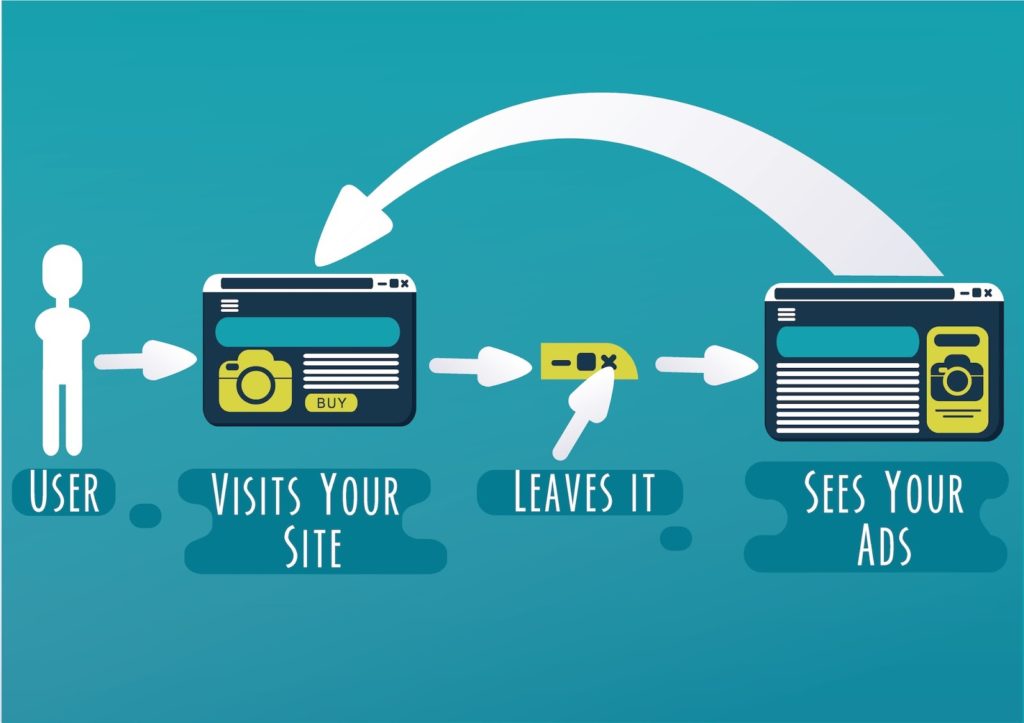(This guest post was written by Skubana, an all in one solution that unifies operations for online merchants after the checkout. Skubana automates everything from order management, order fulfillment, inventory management and purchase order management.)
Succeeding as a multi-channel eCommerce business is challenging, to say the least. And it doesn’t help that there are countless “gurus” constantly spouting advice, most of which is either outdated or simply doesn’t work.
The result is that you often find yourself struggling to gain traction across all your sales and marketing channels. You may be having success in one channel, but trying to get momentum across all of them seems like a Herculean task.
To paraphrase Bill Clinton, we feel your pain. We know just how challenging omnichannel marketing and sales can be.
To help you, we’ve put together a list of seven powerful, yet easy-to-implement strategies for omnichannel eCommerce success.
Strategy #1: Tap Into The Power of Retargeting Across All Channels

If you’re unfamiliar, retargeting is an advertising tactic that allows you to target the same customers across a variety of channels. Essentially, it works like this. When a potential customer visits your site, a tiny bit of software code (often called a “pixel”) is placed in their web browser.
Then, using that pixel, you can show relevant ads to customers when they visit Facebook, sites that use Google AdSense, etc. In other words, you can target people across a variety of channels who have already demonstrated an interest in your product.
This often leads to higher conversion rates and can help you recover abandoned carts.
Just how effective is retargeting? Watchfinder saw a 1,300% ROI from retargeting ad campaigns, a 34% drop in customer acquisition, and a 13% bump in average order value.
Bottom line: if you’re not using retargeting, you’re letting warm leads walk away and missing out on a huge opportunity to increase your ROI on ad spend.
Strategy #2: Give Customers A Variety of Sales Options
Different segments of your audience will prefer different sales channels. Heavy Amazon Prime users will almost always want to purchase from Amazon. Other customers may want to purchase directly from your website, especially if you offer some sort of rewards program. Still others may be heavy eBay users.
To maximize your sales, give customers the option of purchasing through a variety of eCommerce channels. Take a note from Game Quest Direct’s playbook, who was able to increase their sales volume by 20% by giving customers over 15 channels through which to purchase.
Remember, we live in the age of choice, and this applies to eCommerce sales as well. People want to purchase through the channel of their choice, and you’re missing out on sales if you don’t sell through a variety of channels.
Strategy #3: Customize Your Content For Each Marketing Channel
Most eCommerce companies blast the same marketing content across every channel, including Facebook, Instagram, YouTube, email, etc. And while this may be the fastest way to get your content out, it’s certainly not the most effective.
In order to connect with the most potential customers, it’s critical that you customize your content so that it fits naturally within the marketing channel.
Advertising and branding guru Gary Vaynerchuk puts it this way in his book Jab, Jab, Right Hook:
No one would ever think it was a good idea to use a print ad for a television commercial, or confuse a banner ad for a radio spot. Like their traditional media platform cousins, every social media platform has its own language. Yet most of you haven’t bothered to learn it. Most big companies haven’t put in the financial resources, and most small businesses and celebrities aren’t putting in the time.
If you’re promoting your products on Instagram, you’re going to be focused heavily on engaging images. Simply grabbing a product image from your Amazon store isn’t going to get people’s attention. Additionally, your messaging is going to be tailored to the segment of your audience which uses Instagram (probably those between 18-49).
If you’re connecting with your customers via email, you’re going to rely on tried and true email marketing strategies, implementing nurture campaigns that feature a mix of text, calls-to-action, and images.
The point is simply that what works for on marketing channel won’t work for the next. Your content needs to be shaped to fit the channel.
Strategy #4: Implement Reviews Across Every Channel
Living in an age of choice certainly has its benefits, but it also can be intimidating to shoppers. Researching the huge variety of products can be simply overwhelming.
This is why product reviews are so critical. Approximately 70% of people consult reviews to help them make informed purchases. eCommerce giants like Amazon know this, which is why they’re currently fighting so hard to eliminate fake reviews.
Implementing customer reviews across all your channels is critical. Shoppers should be able to find reviews on your website, throughout your emails, on third-party sites like Facebook, and anywhere else they shop.
Strategy #5: Connect With Channel Influencers
Channel influencers are those who have a large following on specific social media channels. For example, there are YouTube vloggers who have millions of subscribers, Instagram “celebrities” who get thousands of likes and comments per post, and bloggers who generate millions of page views per month.
These influencers present a unique opportunity for you as an eCommerce business owner. If you can get these influencers to strategically promote your products to their audience, it can result in a massive customer surge.
There are a number of ways to connect with influencers. You can pay them to talk about your products to their audience. You can offer them free merchandise in exchange for a review. If you have a large audience, you can offer to collaborate with them so that each of you benefit from the other.
Your goal is simply to connect with channel influencers with the ultimate purpose of reaching their audience.
Strategy #6: Market In Conjunction With Specific Events
There are a number of specific events which present unique marketing opportunities. The most obvious is when a customer abandons their cart. A series of strategic follow up emails can significantly reduce your abandoned cart rate.
Another example is when a customer contacts you, whether because of a problem or simply to inquire about an issue. These conversations present opportunities for offering special deals to the customer, which can significantly increase your conversion rate.
Obviously, you have to walk a fine line with this tactic, especially if the customer is calling about a problem. But when done strategically, you can actually increase customer loyalty.
A final option is time-related events, like a customer’s birthday or the one-year anniversary of them becoming a customer. Presenting unique offers on these unique dates can show the customer that you care about them, as well as generate more revenue.
Strategy #7: Double Down On User-Generated Content
User-generated content is, as the name indicates, content created by your customers that is directly related to your products. Examples of this include:
- Photos posted to Instagram of happy customers using your products
- Tweets of positive interactions with customers
- In-depth product reviews on third-party review websites (such as Wirecutter)
- Video reviews posted to YouTube or Facebook
User-generated content is incredibly powerful social proof and can significantly increase sales. By sharing this content across all your marketing channels, you increase the trust level of your customers.
A simple way to get users to create content is to run contests. For example, you could run a contest on Instagram in which customers post photos of them with your products and include a company related hashtag. The more customers participate in these contests, the more user-generated content you collect.
Be Everywhere Your Customers Are
Having a robust presence across a variety of channels is critical for eCommerce success. And the good news is that it’s not overly difficult to gain momentum if you’re willing to dedicate the time and resources required to implement the best strategies.
The key takeaway is that there is no single method that works for every channel. Rather, it’s like cooking a meal. Different ingredients are required in order to create something really good.
Use these different omnichannel “ingredients” to generate the momentum and success you deserve.






Join The Conversation